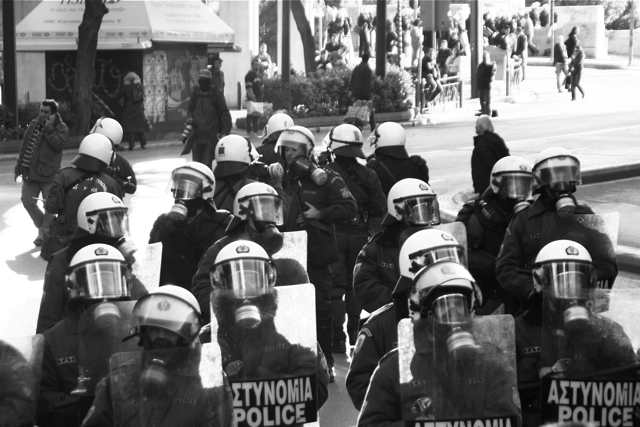Resource-rich countries have become increasingly apparent in the Middle East North Africa (MENA) region. Countries, such as those that are a part of the Gulf Cooperation Council (GCC), have structures defined by their resource-rich nature in areas such as oil. If we look at countries such as Bahrain and the United Arab Emirates, their economic success “hangs on oil market prospects” and “rising oil production and higher oil prices.” Resource-rich economies can have a comparative advantage in the resource sector with their abundant resources. However, these economies can experience major socioeconomic development and growth setbacks, highlighting the importance of economic diversification to achieve greater economic prosperity, especially in resource-rich economies.
Understanding resource-rich economic structures are essential to understanding economic diversification. Economist Max Corden explains how these economies are made up of three sectors: booming, lagging, and non-tradable. These sectors fluctuate with the subsequent resource-based markets. For example, a boom in the oil sector will result in growth in the booming sector, which increases “aggregate income” across all sectors. This boom can be represented in many different ways; for instance, an “exogenous technical improvement,” — which refers to any advancements and improvements in technology and production methods related to the production and usage of resources, such as oil, that define these resource-rich economies. These changes can improve the efficiency of the oil sector and can cause outward shifts in the production function, thereby resulting in a shift in the booming sector. All three sectors coexist and are used to define shifts and changes in the resource market.
However, a boom in the oil sector does not necessarily equate to economic prosperity. The misallocation of profits from the resource sector is a key point when discussing resource-rich economies in the MENA region. Misallocation can take many forms, such as corruption and inadvisable spending, which can hurt these economies in the long run. These forms of misallocation can show the complex, multifaceted underbelly of these resource-rich economies.
First, let’s talk about corruption. Corruption has a big effect on the sustainability and efficacy of an economy, as it can facilitate “time-consuming and inefficient administrative processes,” which can extend further into even attracting “larger amounts of bribes.” Corruption can be measured by looking at the work of Global Financial Integrity, a think-tank that focuses on global illicit economic and financial activity. They use the term “illicit financial flows,” which refers to analyzing the gaps between the source and use of institutional funding. If the use of funding is greater than the source, that proves missing funds and therefore can show corruption. This gap is apparent in MENA countries such as Iraq, where according to former RAND economist Paul Heaton, Saddam Hussein used “illicit contracts” for cheaper oil to reward political supporters. Additionally, the research conducted by Nadeem Ul Haque and Ratna Sahay during their time at the International Monetary Fund (IMF) shows how corruption via misallocation can also appear in countries that have “incentive myopia.” Decreasing budget deficits and increasing expenditures, policymakers will cut wages in the public sector, which will reduce public sector productivity and increase corruption through collusion between firms and tax collectors.
Similarly, inadvisable spending highlights a significant trend for MENA region economics. Inadvisable spending mainly falls under the concept of rent-seeking, which refers to gaining wealth without added productivity. In essence, rent-seeking refers to trying to actively “seek” profits and monetary gains through the manipulation and exploitation of welfare and the social sector through means such as misallocation of wealth and resources. This can lead to many economic troubles, such as “budget deficit, trade deficit, unemployment, [and]public debt.” Iran, for example, has experienced a “permanent decrease in [their]economic growth” due to increasing rent-seeking practices over the last 50 years. In African countries, we see how resource-based rent-seeking can hinder economic growth because of “increased exposure to price shocks and volatility,” which are both harmful in the short-run and long-run by inhibiting processes of “creating jobs” and “financing social infrastructure.”
Rent-seeking can be caused by a plethora of actions, such as the strength of institutions. Rangar Trovik puts it best as he cites how resource-rich entities can have different fiscal effects based on the institutions in place. For example, resource abundance can actually diminish growth in countries that engage in rent-seeking practices and have weak institutions. Torvik defines this as the “resource curse,” showing how institutions can determine the effects that being resource-rich truly have. Additional research has supported this claim that “poor institutions can eliminate the positive effect of natural resources,” which shows the importance that the strength of institutions has on economic growth.
So, what is next? How can these resource-rich countries achieve economic growth and prosperity?
Economic diversification.
Siham Matallah of the University of Oran 2 in Algeria defines economic diversity as reducing resource dependency by diversifying the economy and its investments. In resource-abundant economies, relying solely on resources to define the economy can be very risky. These resource markets, such as oil, tend to be very volatile, making rent-seeking processes exponentially riskier. A way to combat these volatile markets and still experience economic growth is by diversifying the economy. Matallah cites economic diversification as a key pillar toward sustainable economic growth and can help reduce unemployment while facilitating the growth of local institutions.
Siham Matallah’s model finds that as corruption is controlled, economic diversity increases, leading to long-term economic prosperity across socioeconomic institutions and industries. The model is designed to reflect oil-rich countries; because of the volatility of the oil market, it is important to diversify and reinvest economic gains from the oil market into reproducing capital.
Economic diversification has many implementations. However, one apparent in the MENA region is the use of Sovereign Wealth Funds (SWFs). SWFs are investment funds used to invest in domestic and global welfare institutions, protect long-term economic growth, and diversify economies defined by volatile markets. These funds can facilitate development via economic diversification while also focusing on the social sector. SWFs have become increasingly apparent in the MENA region; for example, Qatar has the Qatar Investment Authority, Saudi Arabia has the Saudi Arabian Monetary Agency, Kuwait has the Kuwait Investment Authority, and the UAE has the Investment Corporation of Dubai. We can take the United Arab Emirates and Saudi Arabia for example — the UAE’s collection of Sovereign Wealth Funds has combined to a value of over “$800 billion”, while Saudi Arabia’s collection equates to almost “$300 billion”.
Additionally, within the Arab region specifically, SWF’s investments lie in firms and countries with “less corruption, better developed stock markets, [and]higher economic growth,” which embody a “safety and strategic value” that typical MENA investments seem to lack, thereby releasing some of that extensive reliance on the volatile resource market. As SWFs continue to grow and expand, we will continue to see the importance of economic diversification, especially in resource-rich countries in the MENA region.
Diversification can also come to fruition by developing external sectors of the economy outside of the resource sector, as we see in Oman. Oman’s diversification strategy consisted of “increasing the role of the private sector in the economy” while also “developing human resource capabilities.” Essentially, by developing the private sector and human capital, Oman can begin to diversify its economy into these different sectors to avoid the volatile shocks that define the oil and gas industries. This initiative is reflected in Oman Vision 2040: an initiative to strengthen economic development and health and well-being. Projects like this are also essential to help increase economic diversification in these resource-rich economies to provide and expand sustainable socioeconomic development practices.






